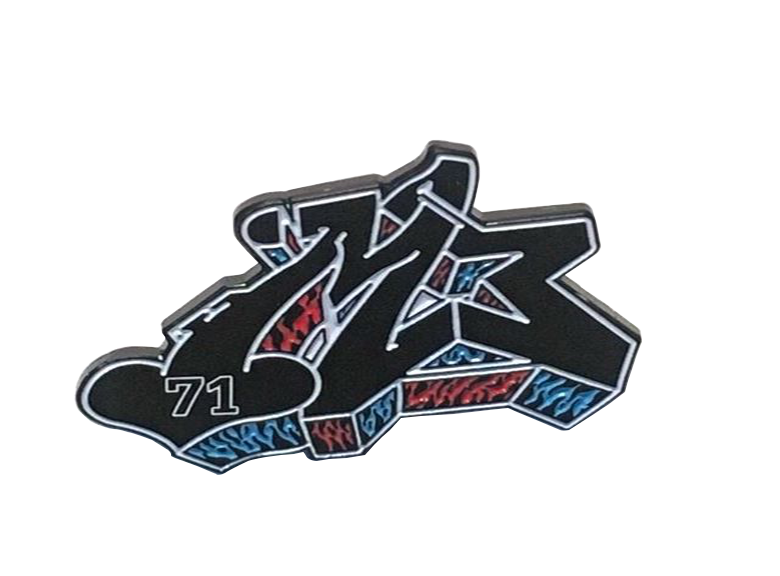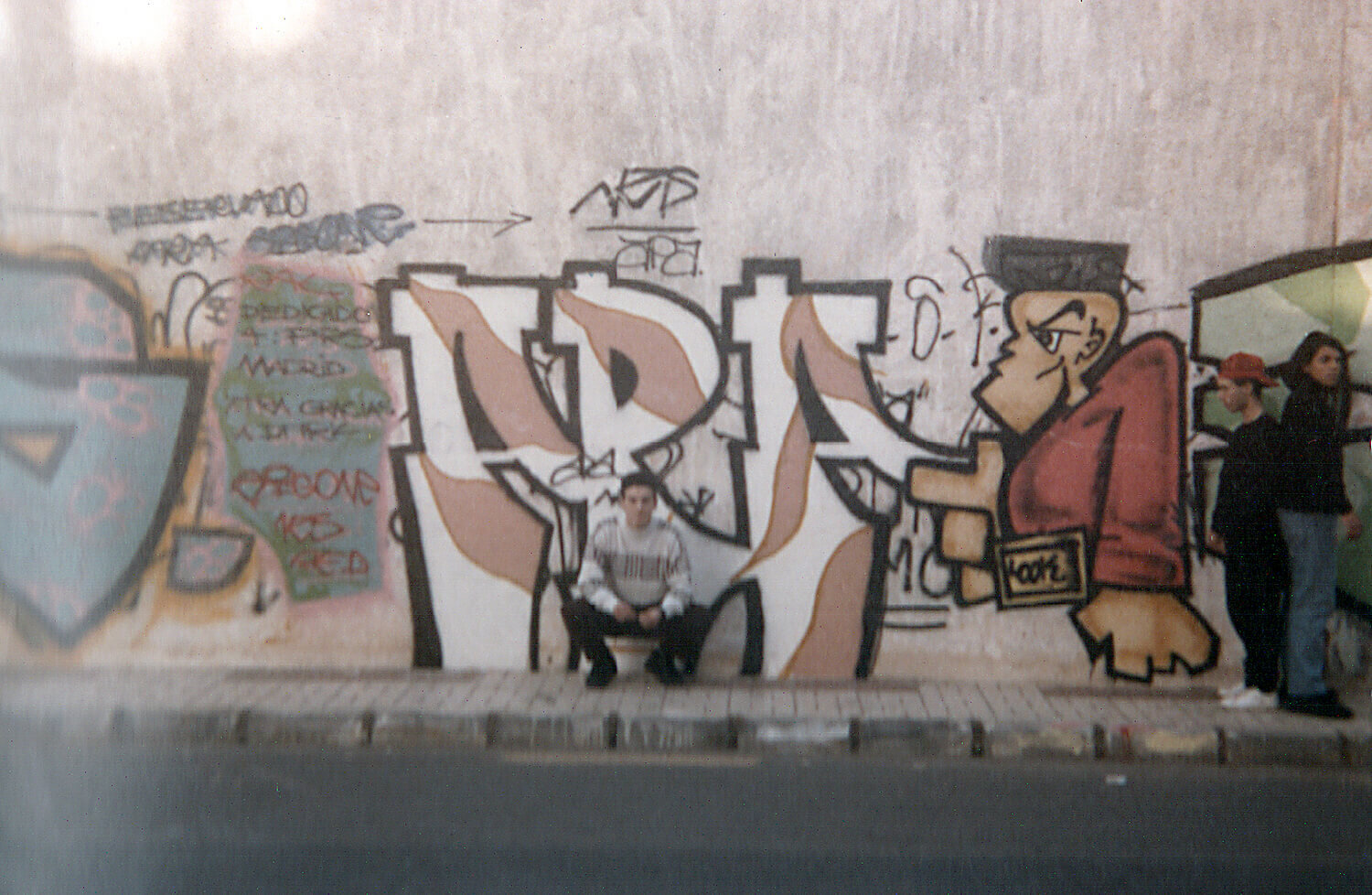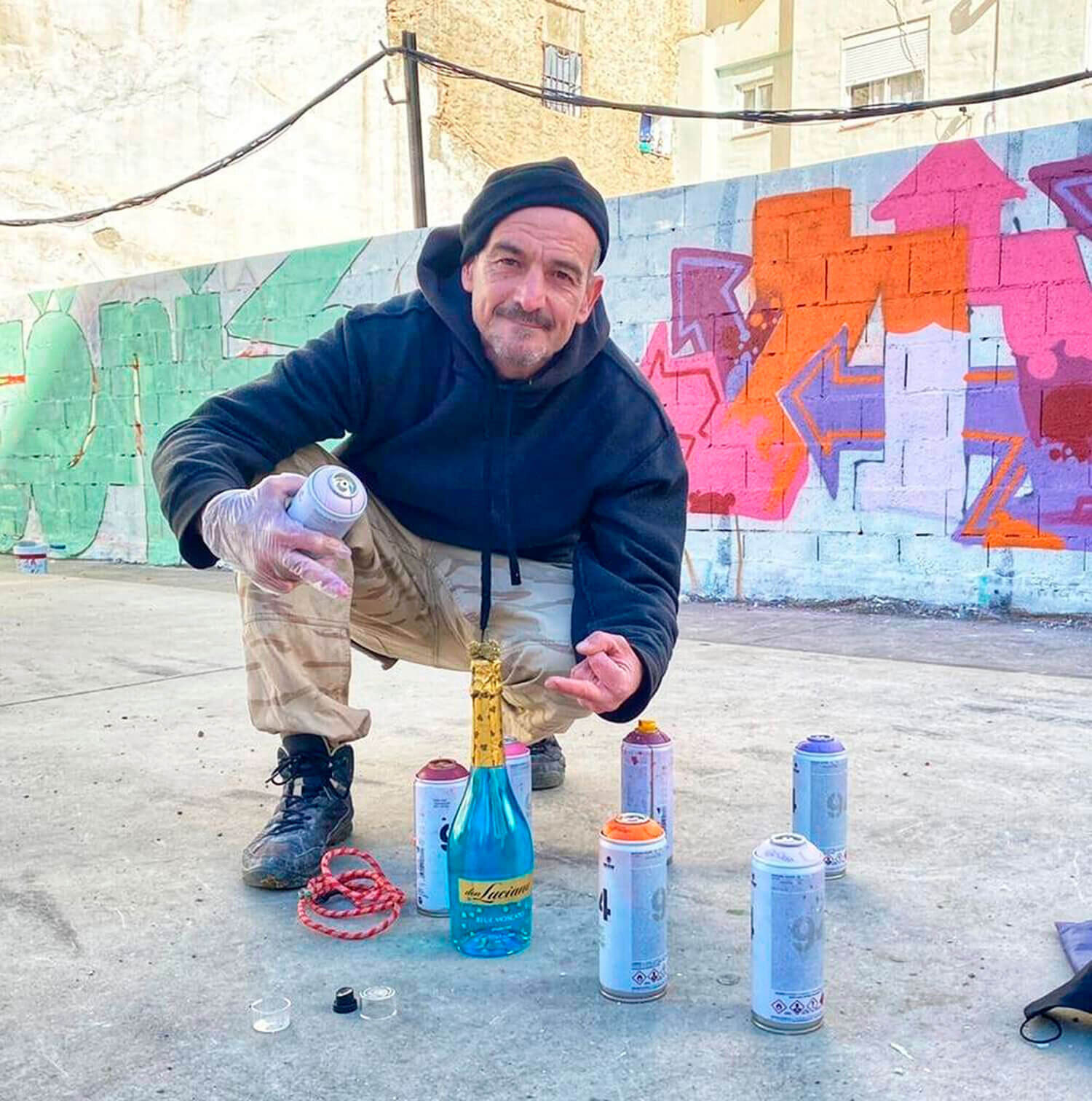La semana pasada tuve la suerte de hacer un directo en la serie de charlas “Hablando en Plata” para Montana Colors Spain y me estrené entrevistando a unos viejos amigos que han llevado el nombre de Hablando en Plata con orgullo durante más de 20 años.
Last week I had the good fortune to do a live chat series "Hablando en Plata" for Montana Colors Spain and made my debut by interviewing some old friends who have carried the name Hablando en Plata with pride for over 20 years.
Hablando en Plata (1999) son un grupo malagueño formado, para quién no los controle, por Capaz, Sicario, Rayka, Dj Narco, y Apa Muchacalle. De ellos, los escritores de graffiti son Rayka, Sicario y Apa, pero por motivos covid (no viven en la misma ciudad) Sicario no pudo estar presente en la entrevista.
Hablando en Plata (1999) is a group from Malaga formed by Capaz, Sicario, Rayka, Dj Narco and Apa Muchacalle. Of them, the graffiti writers are Rayka, Sicario and Apa, but for covid reasons (they don't live in the same city) Sicario couldn't be present at the interview.
TCB CREW
Apa lleva en esto desde el 86, Rayka desde el 89 y Sicario desde 95-96, que se dice pronto. Sin embargo, no fueron los primeros en pintar en la ciudad, según me explicaron, antes de que ellos empezaran a bailar y hacer graffiti había otra crew llamada Spray Crew, del barrio El Palo. Este grupo ya hacía sus cosillas allá por el 85 y 86, pero se difuminaron en los 90. Los nombres de estos escritores eran Truji, Emilio y Bernardo.
Apa has been in this culture since '86, Rayka since '89 and Sicario since '95-96, which is an understatement. However, they weren't the first to do graffiti in the city, as they explained to me, before they started dancing and painting there was another crew called Spray Crew, from the El Palo neighbourhood. This group was already doing their thing back in 85 and 86, but they faded away in the 90's. The names of these writers were Truji, Emilio and Bernardo.
MS1 for Barcelona Game Over Magazine nº5
NAZION SUR, HOMBRES DEL HAMPA Y HABLANDO EN PLATA
Antes de crear Hablando en Plata, todos los componentes formaron parte del colectivo Nazión Sur, compuesto por Elfo (actualmente Elphomega), Mr Kan, Ray K, Seco, Total S y Sr Narco. Dentro de Nazión Sur, la rama de escritores de graffiti bajo el nombre TCB dejaron constancia de lo que se cocía por esa época gracias al TCB fanzine que se publicó durante los años 93 y 94. TCB estaba formado por Ray k, ASB APA, Look, Sicario, MS1, Anuk, As one y Ex ( este era hermano de Spanish Fly, componente de Nación Sur y Triple X).
Entre el material gráfico que Apa me ha pasado podéis ver fotos de Hombres del Hampa grupo que hizo de puente entre el final de Nazión Sur y la creación de Hablando en Plata con la incorporación de Sicario.
Before Hablando en Plata, all the members were part of the Nazión Sur collective, made up of Elfo (currently Elphomega), Mr Kan, Ray K, Seco, Total S and Sr Narco. Within Nazión Sur, the graffiti writers' branch under the name TCB left a record of what was going on at that time thanks to the TCB fanzine that was published during 93 and 94. TCB was made up of Ray K, ASB APA, Look, Sicario, MS1, Anuk, As one and Ex (the latter was the brother of Spanish Fly, a member of Nación Sur and Triple X).
Among the phots that Apa has sent me you can see this one from Hombres del Hampa, the group that bridged the gap between the end of Nazión Sur and the creation of Hablando en Plata with the incorporation of Sicario.
Hombres Del Hampa
LOS 80 Y EL MODELO DE CRECIMIENTO GREMLINS
Por poneros en contexto, España estaba saliendo de la pesadilla del franquismo y las ansias de frescura hicieron de los 80 una década en las que todo crecía con rapidez. Algo así como cuando mojabas a los gremlins.
Malága a finales de los años ochenta - principios de los noventa, era una ciudad muy marcada por el turismo, por la movida malagueña y como no, por los primeros pasos dentro del hip hop. Pero también fue un punto muy importante como puente de tropas que salían del puerto de Málaga, especialmente durante las guerras del Golfo (1990-1991 Operación Tormenta del Desierto.
La década se despidió con una catástrofe pues en 1989, y durante 25 días seguidos la lluvia y las riadas inundan la ciudad. Málaga fue declarada zona catastrófica.
To give you some context, Spain was emerging from the nightmare of the Franco regime and the desire for freshness made the 80s a decade in which everything grew rapidly. Kind of like when you got the gremlins wet.
Malaga at the end of the eighties - beginning of the nineties, was a city very marked by tourism, by the movida malagueña and, of course, by the first steps in hip hop. But it was also a very important point as a bridge for troops leaving the port of Malaga, especially during the Gulf Wars (1990-1991 Operation Desert Storm).
The decade ended with a catastrophe, because in 1989, for 25 days in a row, rain and floods inundated the city. Malaga was declared a disaster area.
TCB Crew
Musa71 x Hablando en Plata para Montana Colors Spain






